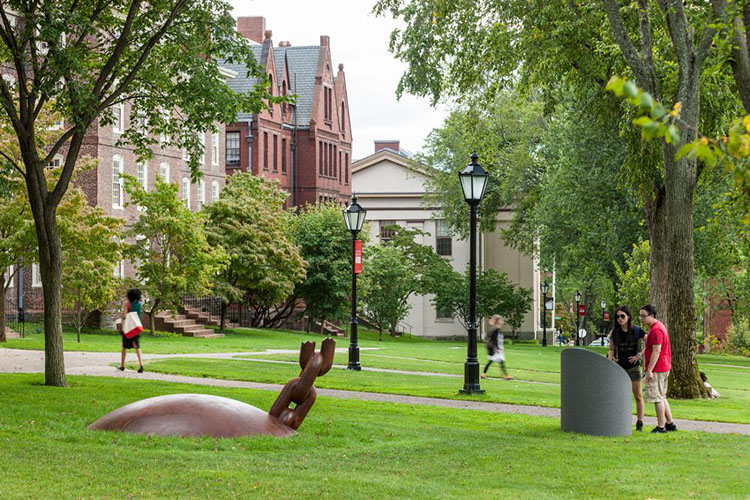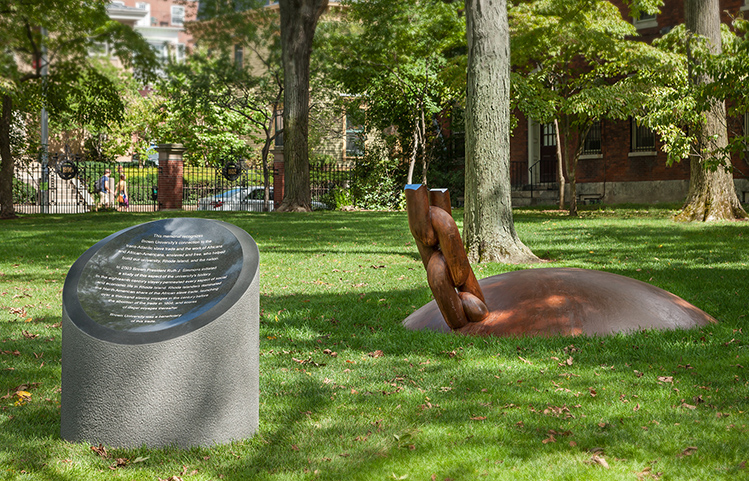
Martin Puryear | Slavery Memorial
Martin Puryear
Slavery Memorial, 2014
- Granite, ductile cast iron, stainless steel
- 96” x 96” x 55” & 43 3/8” x 39 ½” x 30”
- Dedicated on Saturday, September 27, 2014
- Installed on Front Green
The Slavery Memorial recognizes Brown University’s connection to the trans-Atlantic slave trade and the work of Africans and African-Americans, enslaved and free, who helped build our university, Rhode Island, and the nation.
In 2003, under the direction of President Ruth Simmons, Brown University undertook an unprecedented study of the university’s relationship to the trans-Atlantic slave trade. The findings of the three-year study were clear, if discomforting. Slavery and the slave trade were pervasive throughout Rhode Island; Rhode Island dominated the North American share of the African slave trade; the economy of the state was dependent on slavery; and Brown University was a beneficiary of this trade. The Slavery and Justice Committee set out a number of recommendations for future actions, one of which was the creation of a permanent memorial to recognize Brown and Rhode Island’s relationship to the transatlantic slave trade: “a living site of memory, inviting reflection and fresh discovery without provoking paralysis or shame.”

Following the Committee’s charge, preeminent sculptor and National Medal of Arts recipient Martin Puryear created a powerful and elegantly simple object of remembrance. The two-part memorial includes a sculpture and stone plinth with engraved text. A massive ductile-iron chain rises up from a dome measuring eight feet in diameter. The links of the chain are broken at eye level and the surface is mirrored in silver to reflect the sky above. Reminiscent of a ball and chain, the dome also represents the weight of history still half buried, while the reflected sky symbolizes hope for the future. Through his characteristic economy of means Puryear has transformed a recognizable symbol of enslavement into a statement of recognition and hope.
The memorial is sited on the front campus near University Hall, the oldest building on campus. Constructed in 1770, records show that some benefactors contributed their slaves' labor to assist in the construction. For the many viewers who may be unaware of Rhode Island’s connection with the slave trade, the memorial text serves as public acknowledgment. It reads:
This memorial recognizes Brown University’s connection to the trans-Atlantic slave trade and the work of Africans and African-Americans, enslaved and free, who helped build our university, Rhode Island, and the nation.
In 2003 Brown President Ruth J. Simmons initiated a study of this aspect of the university’s history. In the eighteenth century slavery permeated every aspect of social and economic life in Rhode Island. Rhode Islanders dominated the North American share of the African slave trade, launching over a thousand slaving voyages in the century before the abolition of the trade in 1808, and scores of illegal voyages thereafter.
Brown University was a beneficiary of this trade.